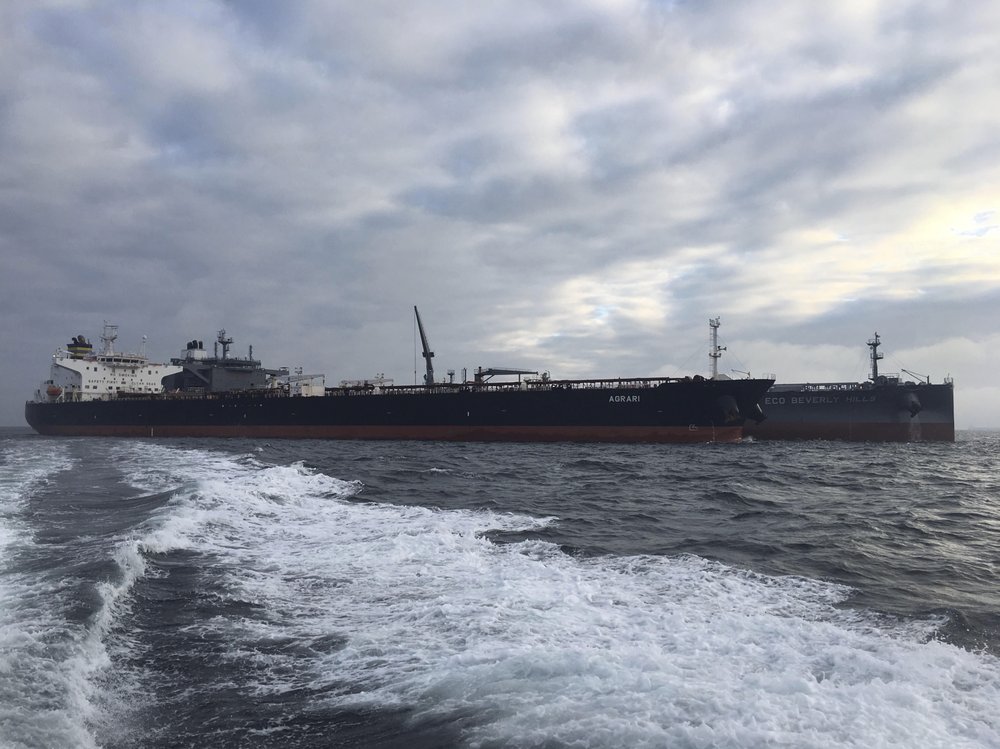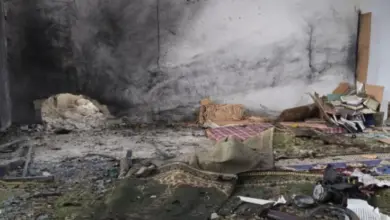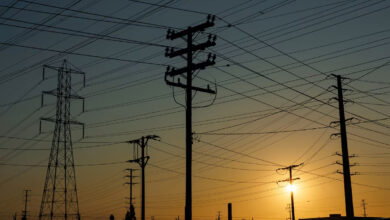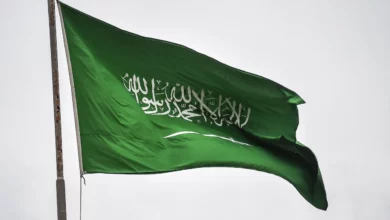
DUBAI, United Arab Emirates (AP) — A mine in the Red Sea off Saudi Arabia’s coast near Yemen exploded and damaged an oil tanker Wednesday, authorities said, the latest incident targeting the kingdom amid its long war against Yemen’s Houthi rebels.
The blast happened before dawn and struck the MT Agrari, a Maltese-flagged, Greek-managed oil tanker near Shuqaiq, Saudi Arabia.
“Their vessel was attacked by an unknown source,” a statement from the Agrari’s operator, TMS Tankers Ltd., said. “The Agrari was struck about 1 meter above the waterline and has suffered a breach. It has been confirmed that the crew are safe and there have been no injuries.”
The ship was still floating off the coast and had been boarded by Saudi officials, the company said. Shuqaiq is some 160 kilometers (100 miles) north by sea from the Yemeni border.
Ambrey, a British security firm, reported the blast and attributed it to a mine. It said the Agrari had cargo from Rotterdam, Netherlands, that it had discharged at the Shuqaiq Steam Power Plant.
“The explosion took place in port limits and punctured the hull of the vessel,” Ambrey said.
The United Kingdom Marine Trade Operations, an information exchange overseen by the British royal navy in the region, acknowledged a ship had “experienced an explosion,” without elaborating. The US Navy’s 5th Fleet, responsible for patrolling the waterways of the Mideast, said it was aware of the incident.
Saudi state television later aired a report claiming a military coalition led by the kingdom destroyed a bomb-laden Houthi drone boat and that a merchant ship sustained light damage. The report offered no details and it wasn’t immediately clear if the report was the same incident at Shuqaiq. Saudi-owned channels later aired reports about Houthi mining in the Red Sea.
The Saudi-led coalition reported Tuesday that it removed and destroyed five Iranian-made naval mines planted by the Houthis in the southern Red Sea, condemning the attempted attacks as posing “a serious threat to maritime security in the Bab al-Mandab strait.” The strait is some 585 kilometers (363 miles) south of Shuqaiq.
The Saudi-led coalition has been battling the Iranian-backed Houthis since March 2015. Houthi military officials did not immediately respond to a request for comment, but they’ve been blamed for other mining incidents during the course of the war. A United Nations panel in 2018 found the Houthis used both improvised and what appear to be Iranian-manufactured “bottom” mines, explosives that could be live in the water for as a long as a decade.
“Sea mines are low cost, easy to deploy, tactically very effective, difficult to detect and thus are a potent threat to both naval and commercial vessels,” that report warned. “Relatively small quantities present a threat out of proportion to their numbers.”
Iran repeatedly has denied arming the Houthis, though experts say Iranian weapons ranging from small arms to missiles have been smuggled to the rebels.
The Red Sea is a vital shipping lane for both cargo and the global energy supplies, making any mining of the area a danger not only to Saudi Arabia but to the rest of the world. Mines can enter the water and then be carried away by the currents, which changed by the season in the Red Sea.
The Red Sea has been mined previously. In 1984, some 19 ships reported striking mines there, with only one ever being recovered and disarmed, the UN panel said.
___
By JON GAMBRELL




